Block out the noise and get the peace you deserve as we delve into everything you need to know about earplugs.
Earplugs are devices inserted into the ear canal to safeguard your ears from loud noises, water intrusion, dust, or other foreign bodies.
But while that sounds simple enough, not all earplugs are made the same. With several earplug variants and potential risks, making the right pick might be overwhelming.
Good news! This guide answers your questions about earplugs by providing background on how they work and an overview of their different types. Read on!
What Are Earplugs?
Earplugs are devices worn to protect against noise or foreign bodies (such as dust and water) finding their way into the ear.
However, earplugs are primarily utilized to mitigate loud noises that can cause hearing damage.
Properly fitted earplugs can dampen sounds by 15-30 dB. This value is determined using the Noise Reduction Rating (NRR) — a metric gauging how much sound hearing protection devices, such as earplugs, can block in dB.
That said, earplugs aren’t the only hearing protection devices in the world. Earmuffs are also noise-protection tools, and it’s common for people to confuse them with the former.
The most significant difference between both is that earplugs are small tubular devices inserted inside the ear canal, while earmuffs feature a headband design worn around the outside of your ear.
Types of Earplugs
Diverse types of earplugs exist, each made with distinct materials for specific purposes. To help you choose the best hearing protection device for your needs, we’ve outlined the different kinds of earplugs below:
Foam earplugs
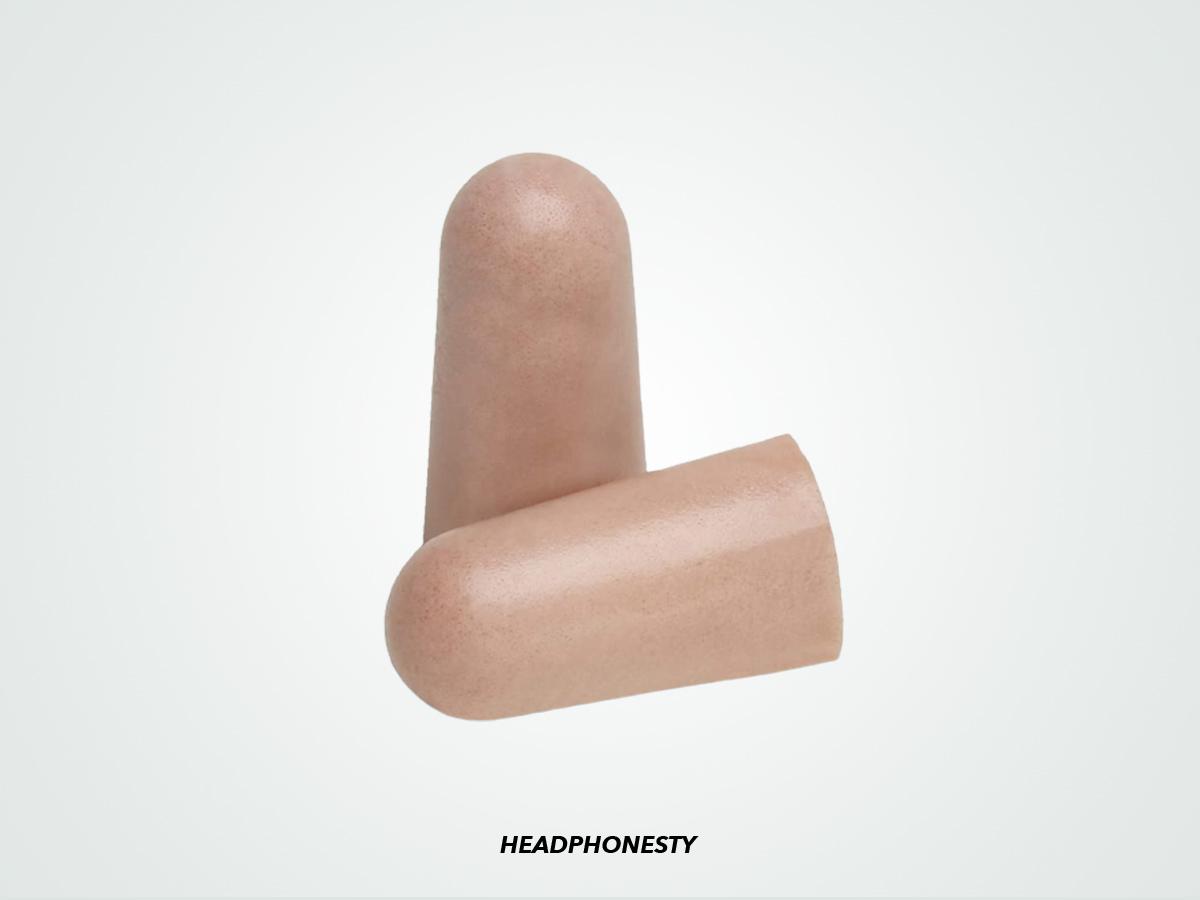
Foam earplugs consist of soft foam materials (mostly polyurethane) that you can roll into a compressed cylinder and insert in your ear.
These earplugs expand to fit your ear canal, providing excellent hearing protection in noisy workplaces and neighborhoods.
If you think foam earplugs are for you, we’d recommend the Mack’s Ultra Soft Foam Earplugs with 33 dB NRR (the highest NRR for earplugs so far) or Flents Quiet Please Foam Ear Plugs with 29 dB NRR.
Pre-molded earplugs
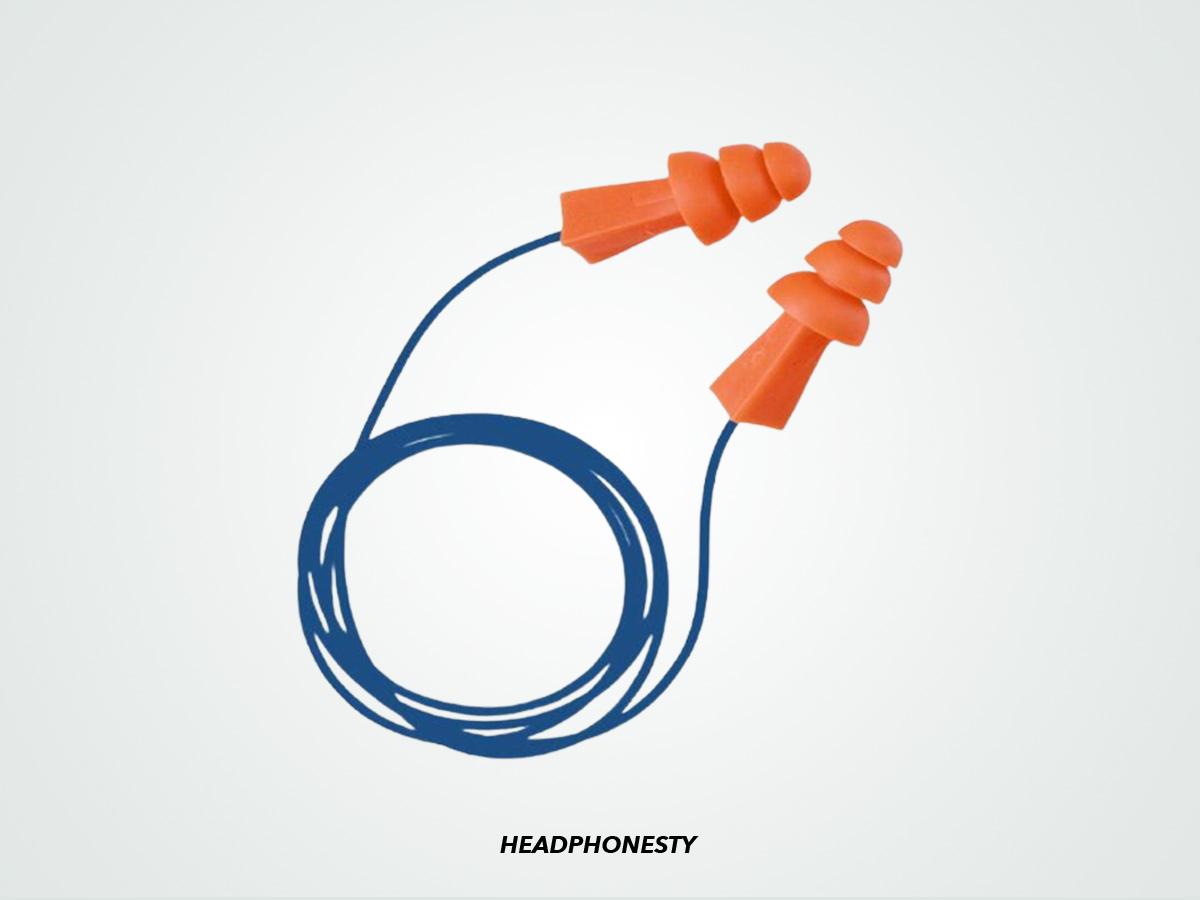
Pre-molded earplugs are often designed from silicone, rubber, or plastic materials. They typically feature a stem and 3-4 soft flanges attached to it, or they can come in a rubbery cone design.
The unique designs of pre-molded earplugs are why they’re usually manufactured as one-size-fits-most or in various sizes for small, medium, or large ear canals.
A crucial benefit of pre-molded earplugs is that they’re washable and reusable, offering slightly longer lifespans than foam earplugs. If fitted properly, these earplugs also feature watertight seals, which makes them ideal for swimming.
Our top picks for pre-molded earplugs are 3M Corded Reusable Earplugs and Loop Quiet Ear Plugs for Noise Reduction, with NRRs of 25 dB and 27 dB, respectively.
Moldable earplugs
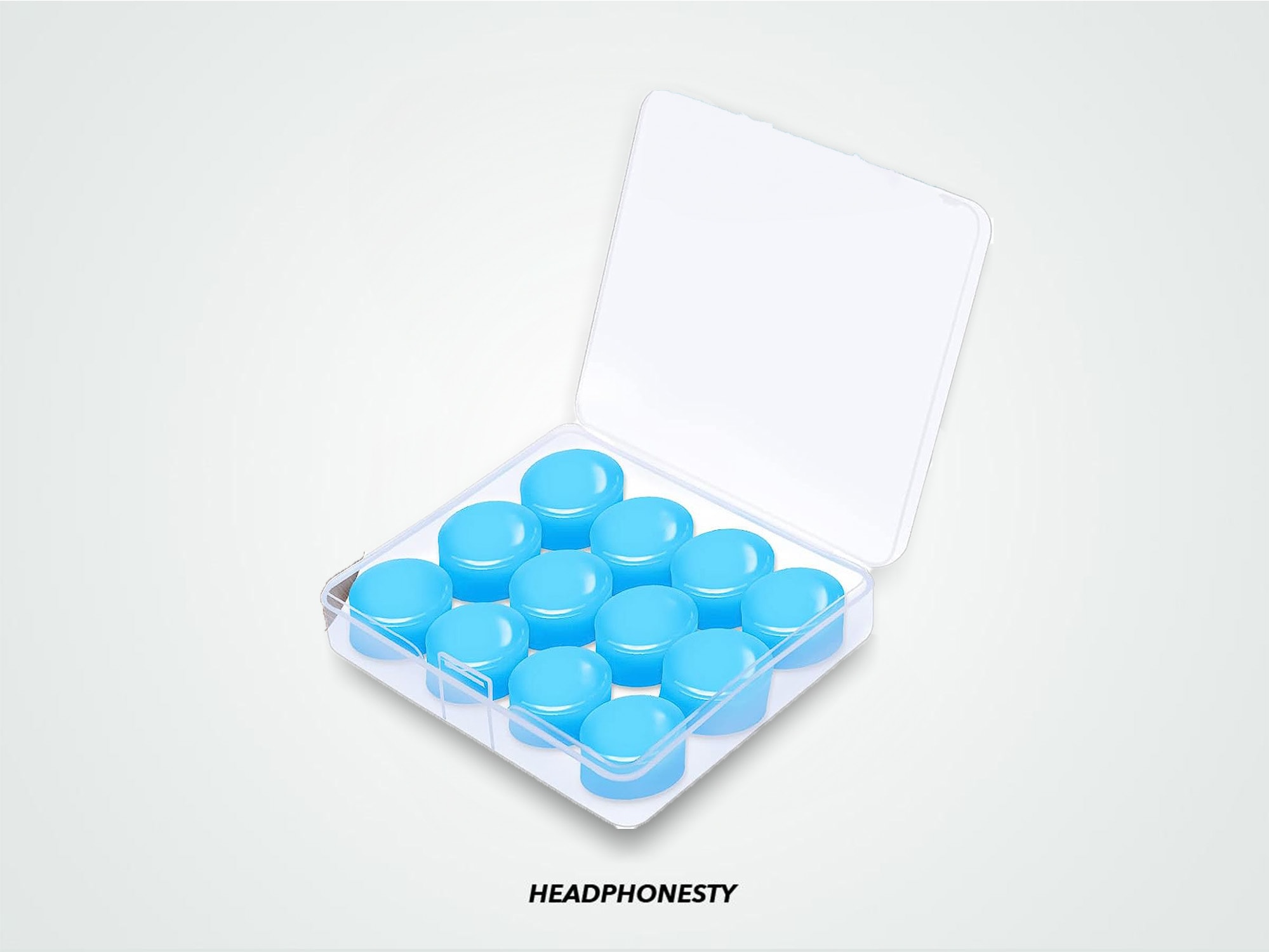
Moldable earplugs are made of either wax or silicone putty and conform to any ear’s shape due to their unique designs. Fitted over the ear canal instead of inside it, moldable earplugs rank among the most comfortable earplug variants.
These earplugs not only shield you from loud noises but also efficiently keep water out of your ear canal, making them an excellent swimming safety accessory.
We’d recommend Alpine SoftSilicone Moldable Silicone Putty Ear Plugs (21 dB NRR) and Decibullz – Custom Molded Earplugs (31 dB NRR) as our top choices for moldable earplugs.
Acoustic-filtered earplugs
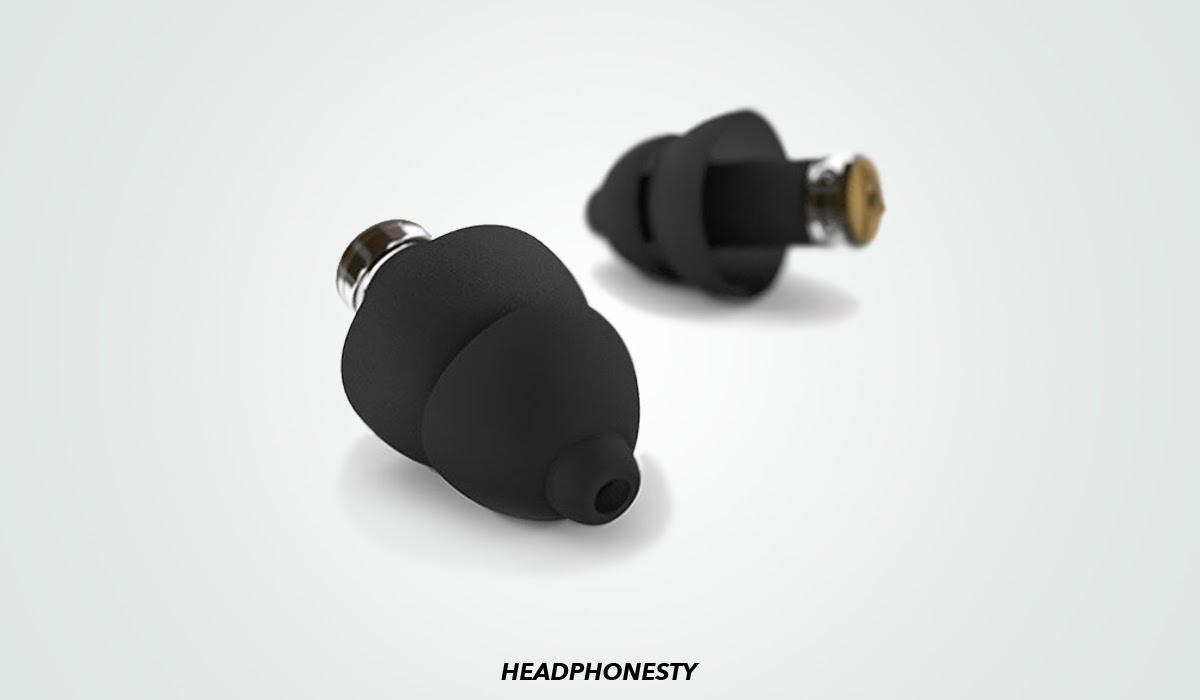
Acoustic-filtered earplugs don’t offer complete noise reduction like other earplugs.
These earplugs use acoustic filters to reduce loud noise to a healthy level while still allowing you to communicate.
These filters work similarly to a funnel. They reduce the volume entering your ears without really filtering off any particular frequencies. Typically, it causes an even, uniform attenuation across all frequencies, with little to no muffling.
For musicians and concert lovers, these filters ensure they still hear the ambient music clearly, but the volume is limited to a safer level.
Our recommended acoustic-filtered earplugs are Vibes High-Fidelity Earplugs (15 dB NRR) and Alpine MusicSafe Pro High-Fidelity Music Earplugs (22 dB NRR).
Electronic earplugs
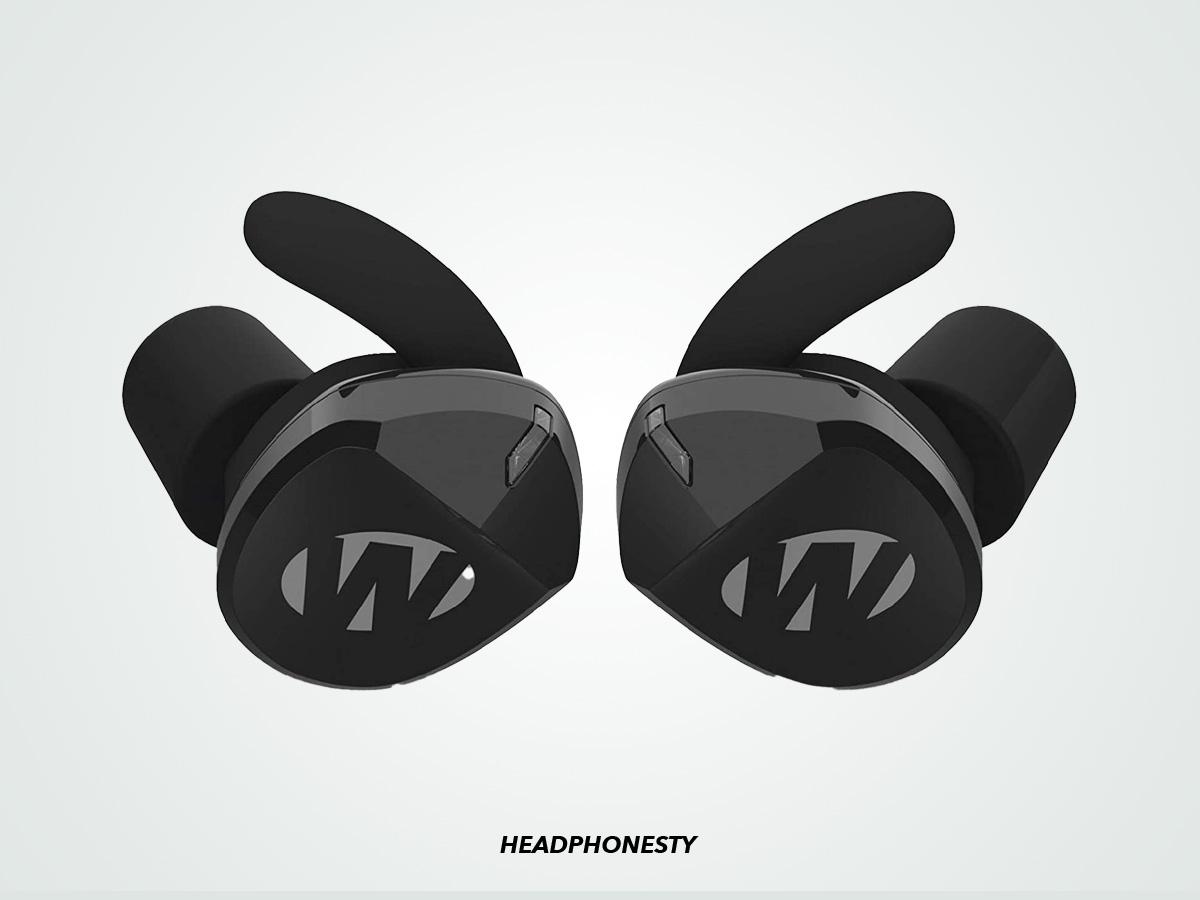
Electronic earplugs have electronic circuits that allow them to listen to your surroundings in real time and let safe sounds (like conversations) pass through unhindered, while protecting your hearing.
Likewise, some electronic earplugs offer sound amplification — an attribute that increases low-level sounds.
This feature works when the earplugs’ strategically positioned microphones detect background sounds you can’t hear with an uncovered ear. Afterward, it amplifies these noises, playing them via earmuffs-positioned speakers.
Despite these, the electronic earplugs’ main purpose is still to protect your hearing.
Once electronic earplugs detect sounds reaching dangerous levels, they’ll automatically disable amplification and resort to passive protection for noise mitigation. Amplification restarts immediately after the loud noise ends.
Due to their unique noise-canceling qualities, electronic earplugs work well to provide hearing protection during shooting practices and hunting.
If you’re a hunting enthusiast, ACT FIRE Shooting Ear Protection (22 dB NRR) and Earmor Electronic Shooting Ear Protection (26 dB NRR) can guarantee auditory safety while in the woods with your buddies.
Risks and Benefits of Using Earplugs
The merits of earplugs as hearing protection devices are numerous. However, instances also exist where they can cause harm. Let’s take a look at the advantages and side effects of wearing earplugs.
Benefits of wearing earplugs
Improved sleep
Constant sleep disruptions extend the timeline your body requires to enter deep sleep, which is essential after a hectic workday.
If you’re a light sleeper or live in a noisy neighborhood, sleeping with earplugs is an effective way to escape the rowdy disturbances threatening your night-time rest.
That way, you’ll enjoy improved sleep and its associated benefits, including sharper cognitive functions, safer blood sugar, and weight control.
Protection from noise-induced hearing loss
Noise-induced hearing loss causes damage to the nerve fibers in the inner ear due to consistent exposure to extremely loud sounds.
With that said, the average NRR on earplugs is between 15-30 dB.
For example, if you’re using a gas-powered lawn mower with 85 dB noise, Alpine SoftSilicone Earplugs (21 dB NRR) can lower the noise to 64 dB.
With noise levels under 70 dB considered safe, these earplugs offer adequate protection from noise-induced hearing loss.
Risks of using earplugs
Ear infection
One of the many misconceptions surrounding earplugs is that they can cause ear infections. Yet it’s your usage and maintenance that causes infections, not the earplugs themselves.
For instance, there have been cases of people experiencing ear infections due to extreme wax buildup in the ear canal.
This happens because, ideally, the wax in our ears should filter out the ear canal without any help. However, using earplugs too frequently prevents earwax from draining out.
Furthermore, dirty earplugs contribute to bacterial growth in the ear. Earwax primarily helps trap bacteria and other germs, preventing them from damaging the eardrum. Whenever we use earplugs, they come in contact with earwax and these microbes.
With time, our earplugs’ surfaces become ridden with earwax and the accompanying bacteria.
Every time we insert such earplugs into our ears, we reintroduce bacteria into their canal, increasing the risk of infection.
Vertigo
Similar to ear infections, earplugs do not cause vertigo directly; it again depends on usage.
As mentioned earlier, using earplugs too often can lead to excessive wax buildup.
Earplugs can push impacted wax against your eardrum, causing vertigo symptoms like dizziness and nausea.
Hearing loss
Hearing loss from using earplugs typically occurs due to extreme wax buildup. As you use your earplugs constantly and earwax builds up over time, you may experience muffled hearing or temporary hearing loss.
Ear infections and damage to some parts of the ear (such as the eardrum) due to excessive or inappropriate use of earplugs can also affect your hearing.
When Should You Wear Earplugs?
Wearing earplugs is recommended for environments characterized by loud noise levels. Therefore, you must wear one when around gunfire, aircraft, explosives, motorcycles, loud workplaces (like construction sites), or loud music.
The CDC states that sounds above 70 dB can damage your hearing after a prolonged period, and loud noise over 120 dB causes instant harm to your ears. That’s why, if you are constantly exposed to such loud noises, wearing earplugs is a must.
Aside from hearing loss, research states that noise can cause stress and affect our health. Constant noise exposure disrupts sleep, raising stress levels over time.
Increased stress is directly linked with high blood pressure, obesity, and diabetes.
With the drawbacks associated with loud noises, earplugs are essential. However, ensure your chosen variant has the NRR required to mitigate hazardous sounds and protect your hearing.
Conclusion
Earplugs are one of the most effective methods to protect our ears from the dangers of loud noise.
However, despite their benefits, there are risks associated with using them too often. As such, it’s best to ensure you use them properly with adequate maintenance.
Got any tips about wearing or choosing earplugs? Or, do you have any earplugs-related stories you’d like to tell? Let us know in the comments below!
